|
English itself is just as diverse as the hodgepodge of narratives, lessons, and history stories in my Chinese school textbook. They unfold the tales of Greek gods, teach problem-solving skills through a character’s mishaps, and describe daily life and customs of Chinese culture. But like Chinese dialects, English possesses languages, each with its own patterns, structures, and tones. The fixed geographical regions in which Chinese dialects are spoken mirror the distinct settings and people with whom I use particular "Englishes". Whether I am using casual English when chatting with a friend or an English of formality with a teacher, each of my "Englishes" are distinguished by nuances, affecting my relationships, learning, and most of all, myself.
Recently, I’ve been noticing how language plays a valuable role in my culture and background; I use it just about every minute, either when verbalizing or socializing online. Though my family is from China and I attend Chinese school, I consider English my mother tongue. Communicating with my cousins, aunt, uncles, and grandparents has always been a fair challenge, our conversations usually a series of forced smiles, weak attempts to answer burning questions, and awkward silence. Of course, there is always catching up to do whenever we reconvene as one big family, along with plenty of hugs and pictures, but Chinese is a distant language I struggle to connect with in order to express myself. My nods, facial expressions, and simply crafted Mandarin sentences replace the natural, breezy English I have come to voice living in America. Often, I find myself saying “Ng” or “Shi de,” brief, terse replies for lack of a better answer (or words I can’t find). In a way, this is the English I speak with my relatives, a combination of active listening, hand gestures, and 8th grade Chinese school vocabulary. My finite language comes in handy when describing a concrete object or idea, such as a book I read or my hatred for celery, but reveals its limitations in more abstract and personal realms, like emotions or expressing love. Saying “Wo ai ni” in Chinese—versus “I love you”—is like making an empty promise to someone that I can’t keep because I don’t understand what I’ve promised. My English allows me to touch on more intimate topics with a fuller heart—I can feel what I’ve said and express it in a way that reflects the genuineness of my emotions. But, to avoid confusing my grandfather, any English is illicit; one word can throw his mind off course and leave him befuddled. In these situations, I seek out verbal assistance from my mother, who can communicate my thoughts in a few seemingly complex sentences, something I could never do. I think and speak most comfortably in English, while in Chinese my thoughts run through my head before each word is articulated. Still, after years of hearing my parents speak Chinese in the comfort of our home, understanding—and writing—Chinese has become a part of me. It makes me whole, rooting the branches of my soul deep in the soil of my heritage. Yet, my "Englishes" do the same—except in a way that words cannot illustrate. This “Chinglish” I speak, a concoction of Mandarin terms and my English glossary to fill in the blanks, limits the moments, laughs, and conversations I want to share and take part in. But my mother isn’t the only person I turn to for help. These experiences strengthen the bond between me and my Chinese American friends who share language barriers with their own families. English is what we use during our own conversations, to express excitement, jitters, and the trials and tribulations of multilingual teenagers. Through trying to piece broken phrases into logical sentences and attending Chinese school, my Chinese American friends are the most encouraging and relatable, experiencing the ups and downs in navigating a space between China and America’s cultures along with me. Blow air into a mixture of soap and water and you’ve created a bubble; put me and my friends into a room and a bubble of friendship will have formed in no time. In other words, the conversations I have with my friends are far from the ones with my family. These chats are like full-course meals with a side of crazy and a sprinkle of inside jokes. Add goofy and an unhealthy dose of laughter to the menu, too. All too often, my friends and I will be laughing over a pathetic pun we tried making, complaining about inhumane teachers, or recalling golden memories back in sixth grade, all the while speaking an English intelligible only among ourselves. This English I use among friends consists of code words, slang terms, onomatopoeias, and standard English with a tinge of French or British. During these moments, the worrying I’m prone to ceases and I can enjoy myself, with no expectations, doubts, and rules to restrict me. Recently, over a FaceTime call with my friend Madilyn, our conversation went something like this: “Oh my gosh, your Gudetama is so cute! I have one too, except it’s upstairs.” “I know right? Let me show you Fernando.” “Ugh, his hair looks voluminous as always. Honestly, I didn’t even comb my hair today and it looks the same.” “Yeah, your hair is like, amazing. If I don’t comb my hair, it would be like, ‘poof!’” I laugh. “Madame Lichtenstein would not be okay with that.” “Madame Lichtenstein is really fit, though.” “Yeah, I know right? Lyssa and Sofia saw her working out at the JCC before.” “Oh my goodness.” See, as quickly as our minds jump from one topic to the next, our conversation leaped from her large Gudetama plush and stuffed alpaca to news about our classmates encountering our French teacher at the gym. This occurred within a minute, a fraction of our ninety-minute call. Without any limits to the ideas I want to convey and emotions I want to express, the English I use with friends acts like the refuge of the gym locker room, where there are no adults to chastise you and what happens there, stays in there. When I list just about every way my oral presentation would go wrong, Madilyn or another friend cuts me off and just says, “Hannah, you’ll do fine. Stop doubting yourself. I’ll probably do a lot worse than you.” Or, if my elbow partner is as irritating as I expected, Calina chimes in: “Okay, look. He literally pays no attention in class and has no respect for anyone but himself. It seems like he’s never changed since elementary school. Ms. Carter better assign you another seat.” (Calina has very strong opinions.) Sometimes, straightforward reassurance or support is what I really need, unlike my parents’ attempts, which only stress me out. That is not their intention, but every now and then, merely hearing Chinese pressures me to process the incoming words carefully and thoroughly, thus giving me a headache. This symptom never appears when I use the English with my friends, where I’m free to voice my emotions and ideas without worry of misinterpretation or communication. And when my ninety-minute call with Madilyn came to a close, with a lighthearted laugh she said, “Time flies by when you’re having fun!” As much as my friends and family are significant in my life, so too are the teachers at school who share a love-hate (or just hate) relationship with every student. Eight-hour school days and a few additional hours of homework consume nearly 183 days of each year, with special gratitude for my teachers, of course. Madame Lichtenstein, a French teacher who frequently crops up in her students’ conversations, once made us copy a 97-term Quizlet set into our journals, with both English and French definitions, and expected us to upload it to Schoology by 5:59 pm the same day. Submitting the assignment minutes late results in a large zero in the gradebook, while turning it in during the school day reveals your “lack of focus” in other classes. As you can imagine, Madame Lichtenstein is someone I address politely to spare myself from the wrath of her alter ego. Strangely enough, using the right English in French class is just as fundamental as applying the proper conjugations in our partnered dialogues. Perhaps an inquiry about a project would sound like: “Madame Lichtenstein, would you please clarify what you mean in the rubric?” while posing the same question to my friend would look like, “I don’t get any of this.” In emails, beginning with a greeting, easing into the question, and signing off politely is the three-step process necessary for a prompt response. This is an English of structure, etiquette, and responsibility, though not in a confined manner like my Chinglish. Rather, it coaches me to be considerate and attentive, a reminder of the old-school motto “Think before you speak.” Of course, not all teachers stroll the hallways of torture with Madame Lichtenstein’s renowned repute, but using this English of formality is never an impractical decision. There is no English quite like this, one that demonstrates presence, structure, and care. Like with any sort of Chinese delicacy, I can’t say I prefer any one of my Englishes over another. Each dialect has its purpose, its role, and its intention, all of which serves as the backbone of another. My outlook on the world, mentality, and actions develop from the blends of Englishes I voice, each uncovering hidden aspects of my qualities and personality. Whether I grapple with my Chinese-speaking endeavors or converse with fellow comrades, the dialect I speak reflects the aura and mood of my location and who I am talking to. But gauging from how I, my knowledge, and relationships have transformed, there is no doubt that the character of English does works far greater than the characters of any Chinese school story written.
1 Comment
How often do you talk to your grandparents? Once a year? Twice? For many Asian-Americans, it's hard to feel connected to your roots when most of your family lives on the other side of the world. As a kid, I hated when my school did those family postcard sale events (you know, to win the cool rubber ducks) because I couldn't even ask my grandparents, aunts, and uncles in China to buy postcards. I envied the kids who would have their whole family gathered each Thanksgiving, because not once has my entire family been together.
And I doubt it's a strife that only I've experienced. For the past few years, my grandparents have lived with me, and it's been something I am more and more grateful for everyday. Our bond has grown so close, and I truly value the generational gap between us - they have so much valuable insight I don't. But their stories are what really capture me, and shape me as a person. I recently sat down with my grandmother to have tea and cake, and she told me her stories as a girl in China. I won't spoil her entire story, but just know that it may make its way into a book one day. Not only do these talks open my eyes to the surreal technological world we live in today, but also to the little things that matter. I asked before, but how often do you talk to your grandparents? I mean really talk? Not just the: "Oh hi grandma! Happy birthday! Are you well? Bye!" They are filled with so many experiences and memories and stories, it would be a shame if they were untold. Call your grandparents. Ask them to tell you about their lives, and I'm sure they will tell you with a smile. Author: Carina Sun 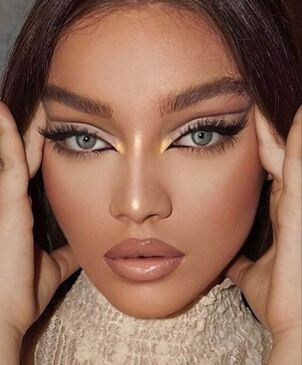 Example of the "Fox Eye" Trend circulating among influencers. Example of the "Fox Eye" Trend circulating among influencers. TikTok, the global social media phenomenon and the thing getting us all through quarantine has a little something for everyone, but with the positives come the negatives. In this post, we'll be reviewing some of the most problematic TikTok trends we've seen. Feel free to let us know your own! 1. "Fox" Eyes I'm sure we've all seen Gigi Hadid, Kendall Jenner, Addison Rae, and countless other influencers pull their eyes back in photos to attempt the "fox eye" look. And there have been two sides to this argument: one, that they are making a trend out of something historically racist towards Asians. Two, that they are just doing it for the aesthetic, and anyone who thinks otherwise is just oversensitive. Tons of creators have defended themselves for doing this, and as far as I've seen, none of them have apologized for it. As you've noticed, our design theme at DeclarASIAN focuses on Asian eyes and really capturing the beauty behind them. We referenced tons of images of Chinese, Korean, Pakistani, and Indian eyes to best represent their features. But this was inspired by my own experiences as a kid, and even now. Just last year, I was still made fun of for having small eyes, with classmates rudely pulling their eyes back to mock mine. And honestly, it hurts. Something that I have personally been bullied for is now being appropriated by models and "influencers?" The people who partake in the "fox" eye trend might not be directly trying to be racist, but there's an entire world of hurt and meaning behind this rude gesture and look for Asians across the world, and subtle racism like this cannot be forgiven anymore. 2. Chinese Street-Style Videos This isn't necessarily a toxic trend, I actually enjoy seeing these videos on my FYP. But I think the shift was way too sudden, considering a few months ago, xenophobia and racism towards Asians (specifically East Asians) was rampant, and now people are transfixed by these street-style videos? It makes me think that people are quick to hop onto trends, whether they be positive or negative. Because let's face it, racist jokes towards Asians in early 2020 were being made by tons of people on TikTok because at that time, it was the "norm." Virtually everyone was doing it, so others just hopped onto the bandwagon. Then a few months later, without addressing the racist Asian jokes they had made before, people began praising Chinese street-style videos because it was, again, trendy. Maybe some people will say I'm just too "pressed" about this issue, but I think it's again, something that society lets slide by because of many factors (model minority myth, stereotypes, "it's a joke bro"). 3. "It's a Joke" Racist jokes on TikTok, not just towards Asians but also towards other races have become so prevalent, it's hard to scroll on TikTok without seeing another popular creator say the "N" word or culturally appropriating an entire culture. When you think about it, almost all of the platform's most popular creators have been caught in a racist scandal of some sort, but we just let it slide. I'm not a big fan of cancel culture at all, but I do think that someone should be held accountable for their actions when they have a big platform. The thing is, some people never do apologize, and the internet moves on, and they're off the hook. Even most apologies are half-assed nowadays, saying a simple "it was just a joke" seems to suffice. Two years ago, someone asked me if I was going to cook my dog for dinner. I was disgusted, and got furious with him. When I asked for an apology, he said, "it was just a joke, chill." (Yes, that is literally what he said). Not only did this "apology" undermine what I go through as an Asian in a predominantly white school district, it was nowhere near an actual apology. So many things said on the internet now are just brushed off as a "joke". So my question is, when and how did we lose the distinction between being racist and making a joke? This ended up as more of a rant than an in-depth look into TikTok's worst trends, but I hope this was relatable to you in some way, whether you are Asian, or another POC who has experienced similar things on TikTok. 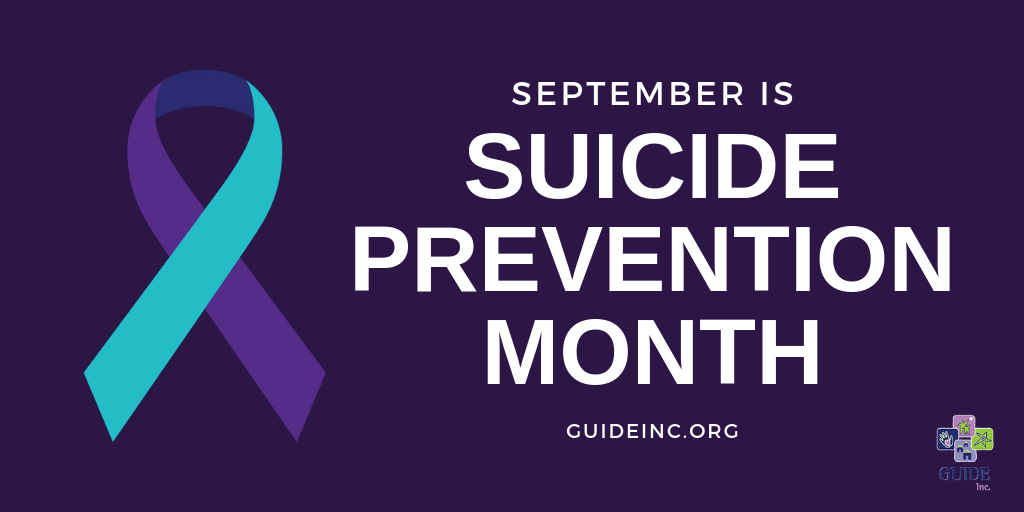 I also wanted to touch base with you all, as it is National Suicide Prevention Month. DeclarASIAN is a pretty small team, and we are always happy and open to chat with anyone. Especially with social media and school starting and the stress of the pandemic, times are challenging, and your mental health should never be overlooked. - Please feel free to reach out if you have some pent up anxieties, emotions, or feelings that you need to share with someone, and we will always be here to listen. Below are also some resources to help you get through this. You are not alone and we will ALWAYS be here for you. National Suicide Prevention Hotline: 1-800-273-8255 Online Chat: Click Here (24/7) Crisis Text Line: Text HOME to 741741 Author: Carina Sun 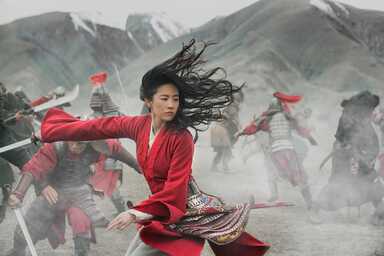 Still capture from Mulan 2020 film, starring Liu Yifei as Mulan. Still capture from Mulan 2020 film, starring Liu Yifei as Mulan. As many of you know; Mulan live-action debuted on Disney+ this week for $29.99. And I honestly can’t say that it was worth it. As a platform that aims to empower young Asians across the world, we know that media has a lot of influence on the way we view ourselves. This includes movies--especially those as culturally important as Mulan. So as someone who grew up worshipping Mulan's badassery and the original story like many other fans, I was hesitant but curious when I found out they were doing a number of things: 1. No Mushu 2. Adding a witch? 3. Having a non-Asian director and a mainly white crew (even the costume designer!?) However, I didn’t immediately think that Mulan was going to be awful. In fact, I believed it still had potential, especially with the large budget and the eye catching trailer. So, after watching the film, here’s my personal take on a few controversies since Mulan was released. First, there’s the issue of the predominantly white crew and director of the movie. After reading a few articles, I found that the director, Niki Caro, was chosen to bring not only Mulan’s story but Disney’s story to life on-screen, which is their reason for choosing a white director over an Asian one. At the very best, this sounds like an excuse. Personally, I think they could have definitely found an Asian director who could’ve also brought Disney’s culture to life on screen, and more effectively directed the movie and appealed to Asian audiences more. But I guess they couldn’t find one? This is not to say that Caro isn't a talented director. She is incredible at what she does, directing the Whale Rider, a beautiful coming-of-age film that captured audiences everywhere, so she is definitely a very capable and talented director. Just maybe not the best pick for this movie. Furthermore, after extensively clicking on crew member profiles on ImbD for an hour, I literally saw about 2 Asian crew members in any category besides stunts (which—thank god they consulted Asian stuntmasters). Heck, even the lead costume designer was white! And although they claimed to have consulted experts on traditional and authentic clothing, to have the LEAD costume designer—someone in charge of portraying the outfits, appearance, and lifestyle of an entire culture—be not OF that culture is absurd to me. Can I mention that in addition to the director, all 8 producers, the casting director, most of the casting crew, and all of the art directors (save one—go Calvin!) were white? But I guess I shouldn’t complain because they needed a crew that knew how to bring the “Disney magic” to the screen. In the end however, the film was pretty culturally accurate in the little details, from the round village huts that Mulan’s family lived in to the costumes and hairstyles they wore. But, I still can't shake the awkward feeling that not many Asians worked on the film at all behind the scenes. In light of recent news that Mulan was filmed in Xinjiang, where the Uighur “Re-education” Concentration Camps are located, we have deleted our previous blurb about giving Mulan a chance regardless because at this point, it’s just blatant disrespect. #boycottmulan - (Although, I still don’t think it is worth paying $30 to watch right now). Last thing, my parents and I weren’t fond of the witch addition. It just seemed very awkward in the whole plot, and like it was just thrown in there (because it was). There’s really no history of witches in Chinese culture, mythology, or Mongolian culture, so it was definitely just a “Disney thing” to throw that in there. The director stated that she wanted the iconoclastic clash between the two female characters, and I get that, but it just rushes the film to a climax that feels awkward and incomplete. That's not to say Mulan 2020 wasn't a good movie at all, because it did have some good aspects. The scenery and camera shots were beautiful, on the spanning New Zealand and China backdrops. The visuals were absolutely stunning, and the cast were pretty good as well. Overall, I think the movie could have been better executed by a non-whitewashed crew, but does achieve that “Disney flair” it was aiming for in the end. Have any of you guys watched it? What are your thoughts? Author: Carina Sun Hey everyone! As you know, I launched the DeclarASIAN Arts Initiative earlier this summer, and we have chosen ten participants, after reading through dozens of your applications! With our grant from the Awesome Foundation, we were able to purchase some quality supplies for the participants to allow them to express themselves through art! Now, we have received some additional funding from our partner, the PCDC. This time, we do have a tighter budget, so there will be some supply changes, however the overall goal is the same: to provide you with the best supplies we can and also online instruction regarding how to use those supplies and create the best final project possible. Here are some of the changes: 1. The online gallery will now be posted online on August 25th, to give the new round of participants more time to create their projects. 2. The new supplies will include color pencils, multi-media Bristol paper, sketching sets, and inking pens (and maybe some other supplies depending on our budget). 3. The current set of lessons will be adjusted to better match with the updated supply list and provide the most beneficial instruction. With that said, the application for our next round is live now! Click the button below to apply. We hope to select 15 participants this round, so please apply and we are so excited to see your applications.
-Carina Sun & Team DeclarASIAN Hey guys! For those of you who aren't participating in our Arts Initiative, we wanted to give an update as to how things are going, and what if will look like!
So earlier this week, art supplies were delivered to all of our participants--if you want to see more information about that process, click here! Now, all of our participants have access to a 9-lesson course created just for them, including tutorials on how to use the materials and supplies, create compositions, and use color. Guest speakers like Niko Chocheli, art professor of over 30 years, have taught special virtual online video lessons for our course as well. With these courses, we hope that they will be able to create their final project--an artwork revolving around and expressing their cultural identities. These final pieces will be posted around August 20th along with progress pictures on our "Arts Initiative" page, and hopefully we will send out all their amazing work to different media companies and online media platforms! We will keep all of you updated on the progress and work of our talented young artists soon! -Team DeclarASIAN 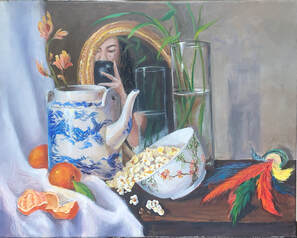 Carina Sun's painting "Self-Reflection" Carina Sun's painting "Self-Reflection" It's time to unveil a project I've been working on for the past few months. I've always been so inspired by art, which has given me an outlet for expression for so long. A lot of my work revolves around my identity as a first generation Chinese-American. I know that my parents have always supported my artistic endeavors, but I know it is also a common theme for Asian parents to steer their children away from an art path. Because of this, a lot of Asian students don't get the opportunities to pursue art as a passion. This summer, I wanted to defy that reality and help a few aspiring artists along on their paths. In early April, I began applying for grants and contacting organizations to host an in-person summer art workshop in July to help young Asian-American artists in Philadelphia learn more about art and give them the resources to pursue it. In the end, the COVID-19 situation forced me to move that plan to a virtual format, which has the same goal. In June, I received a $1,000.00 grant from the Awesome Foundation Philly Chapter to execute my idea. (read my winning statement here). So...what will this arts initiative do? DeclarASIAN will be sending free art kits to Asian-American young artists who apply for this opportunity to enrich their art pursuits. These kits will consist of Liquitex acrylic paints, brushes, pen and ink sets, canvases, pencil sets, and a full, 9-course lesson plan specifically designed to help you create a beautiful final project that expresses your cultural identity. The application deadline is July 14th at midnight, 11:59 a.m. EST. You can read the application requirements by clicking here.
For any questions, email us at contact.declarasian@gmail.com. I wanted to update you all on what we've been doing behind-the-scenes here at DeclarASIAN for the past few months. We've got a little project coming up this summer, which if you've looked through our website, you would have noticed the new "Arts Initiative" page. The details for that are still being finalized, but I hope to reveal and open it up soon!
Here's the exciting news: We're officially registered as a 501(c)(3) Non-Profit now! After weeks of research during quarantine, I filed some paperwork, wrote some letters, typed some bylaws, and drank a lot of coffee. When Claire and I first launched DeclarASIAN, we envisioned it as a platform to give all Asians and Asian American voices a chance to be heard and to empower young activists. We were just two rising high-school students who wanted to help even just a few others find their voices in this changing world. Never did we think that we'd make it here, and we're so grateful to everyone who has constantly supported us since our launch in 2017. That's all for today, but stay posted to learn about our upcoming Arts Initiative and ways that you can get involved! See you soon, Carina Sun Co-Founder of DeclarASIAN Throughout its history, the United States of America has seen the rise of hate groups like the KKK, the American Nazi Party, and movements like the Boogaloo Movement which emerged in white power communities calling for a race war and the rebirth of America as a fascist state. These may be the historical extremes, but they have left scars on this country that cannot be healed. Now, white supremacist groups thrive on social media platforms like Facebook, where many still call for a boogaloo uprising, government overthrow, and mass persecution of ethnic minorities. Recently, these groups which consist of mainly Caucasian males, the ethnic majority peoples in America, are feeling increasingly discriminated against because of their race. In a 2018 PRRI-MTV poll, they found that 55% of white respondents felt that discrimination towards whites is now just as bad as discrimination towards other minority groups. This is just simply not true. The statistics show that the poverty rate within the white population is 8.8%, while poverty rates among the black population are almost 22%. African American students are also less likely to have access to quality education resources. A study from UNCF showed that in 2011-12 only 57% of African American students had access to ample math and science resources, compared to 71% of white students. Furthermore, the black employment-population ratio (49.6% March 2020) has been consistently lower than the white employment-population ratio (53.4% March 2020) and race-related hate crimes towards white people are significantly lower than those towards black people, Asian people, and other minorities. It's difficult to picture a police fatally shooting a white 12-year old boy for playing with a toy gun like they did to Tamir Rice in 2014. Or for white people to fear wearing face masks during the pandemic because they could be attacked for their race like many Asian-Americans do.
Why are ethnic majorities claiming to be experiencing racism? In 2018, the new census projections suggested that by 2045, the nation will become minority white, who will account for 49.7% of the population. This has led to fear of white-extinction in a country of increasing diversity. But is this projection itself powerful enough to shift the very thoughts and behaviors of people? A study conducted by the Association for Psychological Science suggests that when one group hears that there is a rise in the population of another group, they will automatically fear a decline in their own. This may be one of the contributing factors to this new mindset. But another factor is the political climate of our world. With white nationalistic, white-supremacist-supported presidents like Trump leading America, Brexit in the EU, and other nationalistic backlash instances across the world, the world seems to be growing more divided. In fact, it has led to the rebirth of "replacement theory" among many white-nationalist groups who believe that Jews are planning mass migration to destroy the white race altogether. It's not just in America, there's been cases all across the world. In Sri Lanka, the country is plagued by cross-cutting cleavages of race and religion, yet the majority group will say that they are the ones being destroyed and attacked. In Northern Ireland, there has been an ongoing conflict between the majority Protestants and minority Catholics. The latter feared being "outbred" by the Roman Catholics, which fuels the decades-long conflict between the two. These mindsets are not only wrong, but they can be dangerous. I don't know enough about the situations in other countries to speak on them, but in America, I know for a fact that the rise of this kind of "ethnic majority extinction" mindset has caused everything from public temper tantrums to mass shootings. Can ethnic majorities experience racism? While we understand the definition of racism: "prejudice towards someone of a different race based on the belief that your race is superior" we must also understand the causes and different elements that impact it. Racism is upheld by a power structure. Inherently, white people have been at the top of that power structure in modern-day America, which was founded on Eurocentric religion, beliefs, and values. Let's take the government, for example, we see a massive disproportionality in the government, even as it is improving. This year, Congress had 22% non-white members, although compared to the 39% of the non-white population, that still is very much under-representative. However, I do believe that white people can be discriminated against, and they can face prejudice. That is not the same thing as experiencing racism. Unless their way of life is severely negatively impacted by discrimination and prejudice, they have not experienced racism. I'm not saying that all white people have an easy life or haven't faced any hardship, but it just simply means that our society and our country's history has been built on foundations that favor and give more power to white people than people of color. Prejudice towards the majority may be hurtful, but it will not have severe negative ramifications due to this power structure that promotes racism. However, prejudice from the top of the power structure downwards will result in severely disproportionate opportunities and many disadvantages in education, employment, and healthcare for the minority group. Thus, in the U.S., white people would only experience racism if the current power structure made it so they also faced these unequal and unfair negative effects that affect POCs currently with discrimination. But that's not how our current society works. And there will be no change in our society unless we alter the foundation of our country's inherent power structure, and we continue to advocate for more representation, more equality, and more opportunities as POCs. Author: Carina Sun DeclarASIAN, while mainly an Asian-focused platform, stands for empowering all minorities. Our experiences and the experiences the black community in America have faced are not entirely separate. What affects one minority groups affects all minority groups, which is also where the sentiment: Yellow Peril for Black Power comes from. It was the Civil Rights Movement that paved the way for the Civil Rights Act in 1968, which not only provided more rights and opportunities for them, but also for the Asian-American community.
In fact, it's become a global issue. All over the world in countries like New Zealand, the UK, France, China, Japan, and South Korea, similar protests have been occurring. Please click the links below for important resources to support the Black Lives Matter Movement. Petitions to Sign: Justice for George Floyd Ban the Use of Tear Gas on Civilian Protestors Justice for Ahmaud Arbery Ban the Use of Rubber Bullets Willie Simmons has served 38 years for a $9 robbery Donate to: Black Visions Collective North Star Health Collective Brooklyn Community Bail Fund Black Mamas Bail Out Women for Political Change Links: Twitter Thread with Lesser-Known Petitions Twitter Thread with Donation Information But that's not all that you can do. Continue to educate, spread awareness, and post about the issue. Just because the officers who killed George Floyd were convicted doesn't mean the fight is over. In fact, it's just begun. Author: Carina Sun |
|

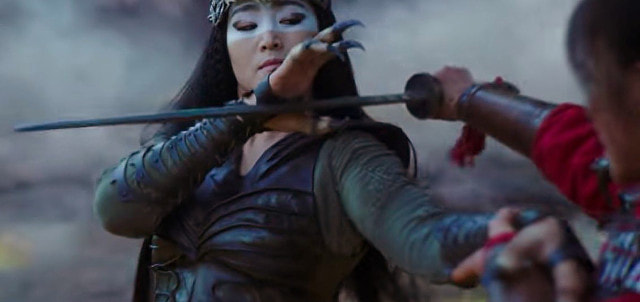
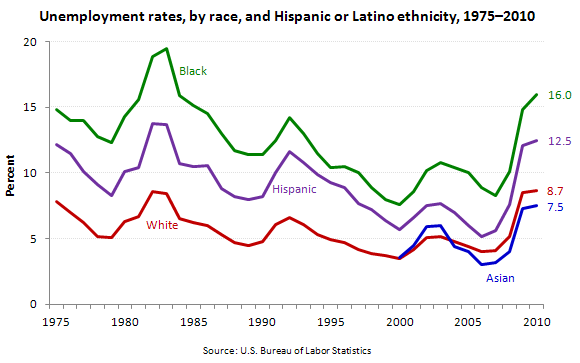
 RSS Feed
RSS Feed